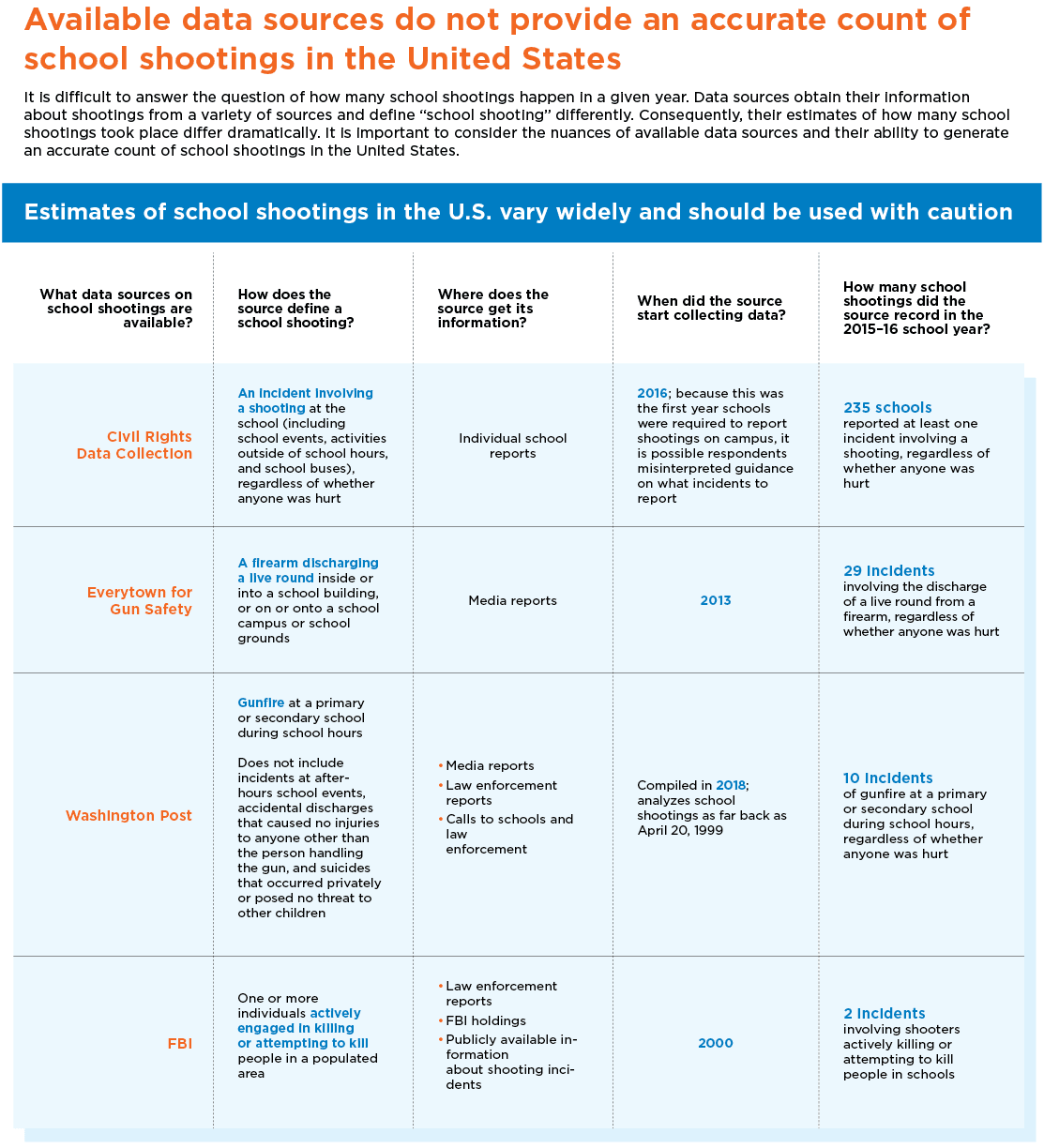Data sources make it difficult to know how many school shootings happen each year
NPR used analysis featured in this blog as part of a story on the Civil Rights Data Collection.
In the aftermath of recent school shootings in Parkland, FL, and Santa Fe, TX, parents, educators, and lawmakers have asked researchers a simple but urgent question: Are school shootings happening more often? The question has proven difficult to answer; while multiple data sources gather this information, there are stark differences in their estimates of how many school shootings happen in any given year. Everytown for Gun Safety identified as many as 29 school shootings during the 2015–2016 school year alone; the Washington Post’s recent analysis identified 10 school shootings in the same year; and the FBI reported two incidents of school shootings with active shooters.
To add to the mix, the U.S. Department of Education’s Civil Rights Data Collection (CRDC) has emerged as a potential new source of data on school shootings. The CRDC is a biennial, mandatory data collection from each public school and school district in the nation that asks schools whether they have experienced at least one incident that involved a shooting.
Our analysis of the CRDC’s 2015–2016 data set found that 235 schools reported at least one incident involving a shooting over the course of the academic year. While this figure is alarmingly high when compared with other sources, there is good reason to be wary of this estimate. Because the 2015–2016 school year was the first for which schools were required to report a shooting on campus, it is possible that respondents misinterpreted federal guidance on what incidents to report. For example, some administrators may have inadvertently reported student firearm deaths that took place away from the school and school events, when the survey asked only about criminal acts on school grounds and in school buildings, on school buses, or in places that host school-sponsored events.

The CRDC is a critical source of school-level data on a range of education equity topics, including school discipline, access to rigorous coursework, and bullying. While the CRDC could become an important source of information about school safety, its current broad definition of school shootings makes it unsuited to tracking the prevalence of incidents similar to Parkland and Santa Fe. Further, the routine challenges associated with helping schools respond consistently to a new question require researchers, policymakers, and the media to treat the 2015–2016 estimate of school shootings with caution.
Finally, the sharp contrast in data from CRDC, Everytown for Gun Safety, the Washington Post, and the FBI are likely due to differences in the definitions used to gather data. The CRDC, Washington Post, and Everytown for Gun Safety use relatively expansive definitions, while the FBI excludes drug-related and gang-related shootings, as well as incidents that did not appear to put other people in danger (i.e., accidental firearm discharges).
As the Florida and Texas school shootings loom large in the public eye, the public deserves an accurate understanding of the frequency of such events. To ensure that researchers avoid either creating unnecessary alarm or understating the potential risk to students, they must carefully consider the nuances of available data sources.
© Copyright 2024 ChildTrendsPrivacy Statement
Newsletter SignupLinkedInThreadsYouTube